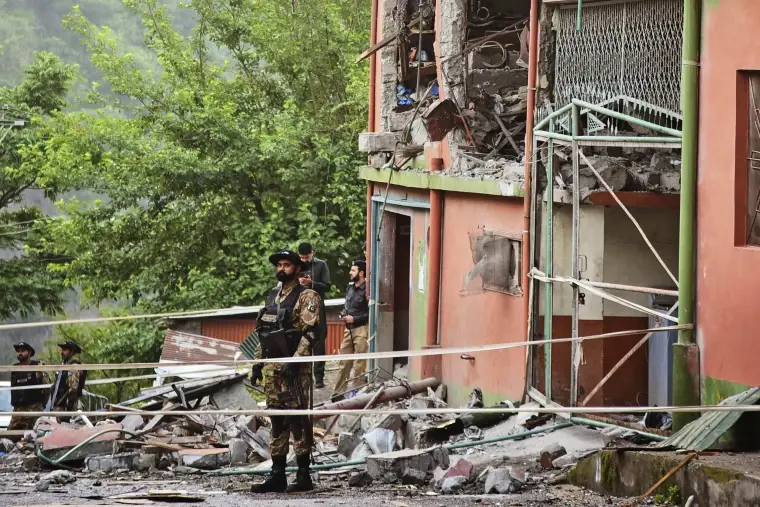The in 2025 terrorist attack in Pahalgam, Kashmir which saw 26 civilian deaths flamed the India-Pakistan rivalry into a dangerous crisis. India’s “Operation Sindoor” which took place on May 7 against what they deemed to be terrorist sites in Pakistan set off a large response from Islamabad which in turn increased tensions to the highest point in a few decades. Pakistan’s military and also diplomatic action to that as well as public outburst brought in to play the fear of a wider conflict between these nuclear armed neighbors.
The Trigger: Pahalgam Incident and Outbreak.
In 2025 April 22nd a terrorist attack which took place in Pahalgam, Indian administered Kashmir killed 26 people which included 25 Indians and one Nepalese. India blamed the attack on Pakistan based groups Lashkar-e-Taiba (LeT) and Jaish-e-Mohammad (JeM) also accused Pakistan of being a home to them. Pakistan denied any role but tension rose. India responded by stopping issue of visas to Pakistanis, Pausing Indus Waters Treaty cooperation and closing its air space to Pakistani flights. In response Pakistan cancelled Indian visas and expelled Indian defense attaché. May 7th 2025 saw what India named “Operation Sindoor” in which they struck at what they said were 9 terrorist sites in Pakistan and PoK which included LeT’s base in Muridke and JeM related sites in Bahawalpur. India put forth that the attacks were precise counter terrorism measures but Pakistan presented it as an act of war which reported 26 civil casualties which included 10 relatives of JeM leader Masood Azhar and 46 injured. This in turn set the stage for Pakistan’s revenge which pushed South Asia into a very volatile crisis.
Pakistan’s Retaliation: Military and Peaceful Strategies.
Pakistan reacted very quickly on many fronts. Militarily it went from a low level of engagement, of small arms fire between the lines at Rajouri and Poonch to large scale artillery exchanges. India reported civilian casualties in the low double digits, at the same time that Pakistan said it struck Indian positions in Kupwara. Unconfirmed reports out of Pakistan said they had brought down as many as 5 of India’s aircraft but that has not been confirmed. Also we saw an increase in Pakistan’s air and ground activity against Indian positions which included civilian casualties. India put out numbers that 7 civilians died and 30 were injured in the crossfire from Pakistani fire. Diplomatically in April Pakistan had already shut trade and airspace to India. After these incidents it declared India’s actions a violation of the UN Charter and put out that it will react at a time and place of its own choosing. Prime Minister Shehbaz Sharif brought together the National Security Council and asked for military action to be authorized and also for international support, which at the UN Security Council did not materialize into much.
Read More:- Operation Sindoor briefer, Col Sophia Qureshi, who is she?
Public and Rhetorical Escalation
Pakistan saw an outpouring of internal response which was very rhetorical in nature and public to the point of rage. We had officials including ISPR’s Lt Gen Ahmed Sharif Chaudhry promise a reaction which would turn India’s “temporary victory into a permanent problem”. Protests broke out across Pakistan, with crowds setting effigies of Indian Prime Minister Narendra Modi and putting forward anti India. On X we saw Pakistani users fuel that nationalistic fire which at time shared unverified reports of military achievements like we did the report of us bringing down Indian jets.
Deep Insight: Branches and Issues.
The issue is that which the Kashmir dispute is at the core of, made worse by domestic and geopolitical issues. The Pahalgam attack which played upon tourists safety issues put to question India’s report of stability in Kashmir post the 2019 autonomy revocation which in turn brought out a hard lined response to project power. Pakistan which does not confirm to ties with terrorist groups is at the same time put to task for LeT and JeM’s role which in turn plays upon their “moral and diplomatic” support for Kashmir. In Pakistan which is dealing with a weak economy and political division a strong response is a must to unite the nation which at the same time presents economic risks. As nuclear equipped states both are cause of great alarm for the UN Secretary General Antonio Gutteres who warned of “tragic results” and Japan which called for cool heads. Iran’s mediating efforts are hampered by Indias rejection of third party intervention.
What’s Next?
The crisis may worsen which in turn sees Pakistan step up LoC attacks or go after larger targets in response to India’s incursion. India may in that case take what it terms as pre-emptive actions which in turn may pull in the air force. The World Health Organization, the U.S. or China may push for talk which may include back channel discussions, but India’s rejection of mediations and Pakistan’s self defense stand points will put that in question. Also will see a rise in civilian casualties and displacement and economic issues like closure of airspace and drop in the Indian market which will hit Pakistan’s still fragile economy hard. In the long term a protracted issue will cause the rise of nationalistic tones with India looking to get sanctions in return for which Pakistan may lean on to China. Though we are out of the nuclear danger zone for now that doesn’t mean the risk isn’t present. A backchannel ceasefire will be a hope for some, but it will only happen if leaders do not put their domestic issues before stability. The area is at a very fine line between blow up and de-escalation.


